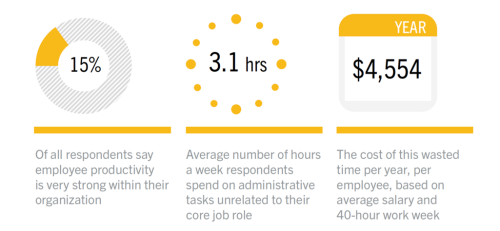
I am frequently invited to attend user conferences in the HR Tech space and I am becoming a huge fan of these events. There is something for everyone – from certification to skill building to inspiration to fun! The latest case in point was KronosWorks, the annual gathering of customers and prospects of Kronos, the heavyweight provider of tools and services to manage and engage an entire workforce with a focus on time/attendance management.
With over 2,500 attendees from all over the world, KronosWorks was organized like a well-oiled machine. Based on my experience there – and at a number of others, like those produced by Universum, Smashfly, and Globoforce, here are my top 6 reasons to attend an HR Tech User Conference.
- Improve the ROI of your HR Tech investment. All user conferences provide training on getting the most of the product or service. ATTEND THESE SESSIONS! I guarantee you that you aren’t getting all the possible value out of your investment. And think about bringing someone along with you next year. Having more than one person with technical skill in managing the product/service helps mitigate risk.
- Learn how it really works. Creating relationships with peers in other organizations can save you time and money. Whether these are organizations that deployed the full stack, deployed the solution before yours did, or those that were similar in purchase and deployment strategy, comparing notes and learning from others’ successes and mistakes will only improve your investment’s impact.
- A view of the future. Every user conference has a session that discusses the product/service roadmap. Want to know what’s coming? This is invaluable for planning the next year’s budget. Have suggestions for improvements? Trust me, the vendor will be all ears – and you’ll have access to the most senior leaders of the organization. Come prepared with your product wish list!
- Certification. Almost every user conference offers technical certifications as well as the usual HR-related certifications. Why not make this part of your personal professional development plan as well as an organizational effectiveness plan? If PD dollars are tight in your organization, these conferences are solid two-fers.
- Inspiration. Most user conferences these days have dynamite keynote sessions – whether, like at KronosWorks, where the topic was generational dynamics, or like others where futurists and other top selling academics and authors speak – there’s always a thought provoking topic that provides complementary current thinking.
- Social Activities. All the user conferences I attend have wonderful opening receptions with great food and music, and the opportunity to meet other attendees. Additionally, some provide pretty amazing “outings.” This year KronosWorks was held in Orlando and everyone was bussed over to The Wizarding World of Harry Potter for an evening of relaxed fun. I know there were lots of implementation discussions taking place over magic wands that night!
These conferences are valuable for anyone who touches the implementation or administration of an HR Tech product/service. And especially for those in the first year or two of a user relationship. You can’t have too many relationships at the top of the vendor’s organization and you can’t know enough about how the technology can work for your organization. And if you’re a long-time or power user, your user experience will be hugely impactful in the continued tweaking of the product and the product roadmap.
The bottom line for attending an HR Tech user conference is that both sides of the relationship get smarter – the product/service gets better, your relationship with the vendor gets stronger, and you get smarter. Not a bad ROI.







